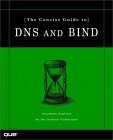The DNS authoritative name server are domain name servers which return a queries that have only the original record source code from its master administrator configuration setup allows. DNS authoritative normally works with two main concepts the web server is going to deliver back the return of authoritative internet domain name server responses or the D.N.S can be set so it won’t cache any records.
The Requirements that you will knead in setting up your own authoritative DNS server are one or greater number of static IP addresses from your intern provider. The name registries require you to have two or above number of fixes IP addresses this is the rule of thumb in most cases. The zones can be set to master or slave for one or more of the domains has to be set for running an authoritative DNS.
This is used in some ways like a fire wall for example, if your internet domain administrator configuration setups or by dynamic DNS methods, can bring back a different query answers compared to a regular DNS query on another domain name server. The DNS authoritative only name server will just return only the query answer for the domain names system that have been dedicated or aloud in the specifically configured by the administrator.
The dns authoritative name-server can be a master domain or a slave server system. A master server stores the original file copies of all zone records the country registrar is going to require your server to have the entire different zone to be authoritative dns for set up beforehand you submit for registration.
An example of a bind zone file
$TTL 86400
@ IN SOA ns1.dns4you.com. dnsadmin. somesite.com. (
2010022427 ; Serial number
864000 ; Refresh after 10 days (secs)
36000 ; Retry after 100 mins
3600000 ; Expire after 42 days
864000 ) ; Minimum TTL 10 days
IN NS ns1. somesite.com.
IN NS ns2. somesite.com.
IN MX 0 mail
IN A xx.xx.xx.xxx
ns1 IN A xx.xx.xx.xxx
ns2 IN A xx.xx.xx.xxx
mail IN A xx.xx.xx.xxx
www IN A xx.xx.xx.xxx
ftp IN CNAME www.somesite.com.
The slave dns server communications with the DNS protocols to update the master system to automatic maintain an identical backup file copy of the master records.
All of the Domain name server NS zones should have a bind configuration definition and are to be assigned their own group of authoritative name servers that are placed into the parent zone NS records.
When you buy internet domain and then have it registered at the domain registrar service their installation setup in the domain registry has a top level domain that requires the assigning to the primary name server along with the accompaniments of least one or more secondary naming system. The main reason for the several servers is to make the domain constantly in action even if ether the name slave or master server kicks the dust and becomes inaccessible or corrupted in some way. The final designation point of the primary is singularly determined with its DNS authoritative priority settings imputed at the internet domain registrar service. For this application use mostly fully qualified domain names of the name server are applicable or a DNS accommodate at the registered domain in circumstance a corresponding IP address is necessary also.
















No comments:
Post a Comment